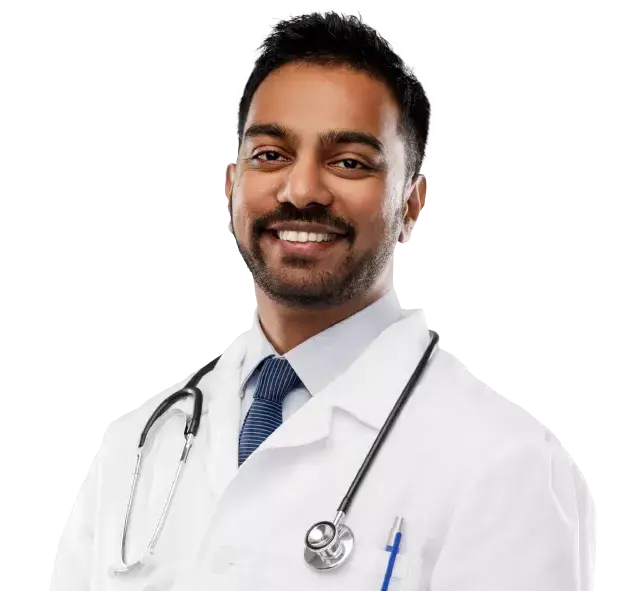
Select City
Varicose vein stripping is a surgical procedure that helps treat the swollen and twisted veins, known as varicose veins, on your legs. This condition causes discomfort, swelling, and severe pain, sometimes making the veins look quite noticeable. The procedure involves removing the damaged veins to relieve these symptoms.
Varicose vein stripping is a surgical procedure that helps treat the swollen and ... Read More




Free Consultation

Free Cab Facility

No-Cost EMI

Support in Insurance Claim

1-day Hospitalization

USFDA-Approved Procedure
Choose Your City
It help us to find the best doctors near you.
Bangalore
Chennai
Coimbatore
Delhi
Hyderabad
Kochi
Mumbai
Pune
Thiruvananthapuram
Delhi
Gurgaon
Noida
Ahmedabad
Bangalore
Varicose vein stripping is a surgical procedure for removing varicose veins, swollen and twisted veins that commonly appear under the skin in the legs. This condition often develops when the valves in the veins become weakened or damaged, leading to blood pooling in the veins. If left untreated, varicose veins can cause discomfort, affect self-esteem, and lead to serious health problems.
The varicose vein stripping procedure involves surgical removal of varicose veins, particularly the great saphenous vein. Vascular surgeons make small incisions in the groin and lower leg and insert a thin wire into the affected vein. The vein is then pulled out through these incisions. This procedure helps restore proper blood flow by eliminating veins that are no longer functioning effectively due to damaged valves.
Recovery from varicose vein stripping generally takes about 2 to 4 weeks. During this time, patients are often advised to wear compression stockings and avoid strenuous activities. The goal of the procedure is to reduce pain, alleviate symptoms, and improve the appearance of the legs.

Fill details to get actual cost
Different types of varicose vein stripping procedures are available depending on the technique used:
Although varicose vein stripping was once a common treatment, it has largely been replaced by less invasive techniques like endovenous laser ablation and radiofrequency ablation. These modern techniques offer quicker recovery times and fewer complications.
Before proceeding with varicose vein stripping surgery, a thorough diagnosis is essential to understand the severity of the condition and to determine the best course of treatment. The diagnostic process typically includes:
Varicose vein stripping is a surgical method used to alleviate the symptoms of varicose veins. Here’s what happens during this procedure:

Diet & Lifestyle Consultation

Post-Surgery Free Follow-Up

Free Cab Facility

24*7 Patient Support
The decision to proceed with varicose vein stripping surgery depends on several factors. Here are some criteria that may indicate you are a suitable candidate for this procedure:
Remember, it’s important to discuss all your treatment options with your doctor. They can guide you towards the best course of action based on your personal circumstances and health needs.
Varicose vein stripping is a surgical procedure that offers several benefits to those suffering from chronic venous insufficiency. Here are some of the advantages:
Preparation plays a pivotal role in ensuring a smooth surgical process and optimal recovery. Here are some steps to follow:
Recovery is crucial to ensure optimal healing and minimise complications. Here are some tips for a successful recovery:
Like any surgical procedure, varicose vein stripping also comes with its own set of potential risks and complications, including:
Remember, every individual is unique, and so is their health condition. Always consult with your doctor to determine if varicose vein stripping is the most suitable treatment option for your condition.
Varicose veins can often be recognised through several noticeable signs, such as swollen, bulging veins that are blue or purple in colour and appear on the legs. Other symptoms may include an achy or heavy feeling in your legs, muscle cramping or burning, throbbing, or swelling in your lower legs.
Varicose veins typically result from weakened valves and veins in your legs. When these valves don’t function as they should, blood can back up and pool in your veins, causing them to swell.
Varicose veins can develop due to numerous factors such as age, hormonal changes, pregnancy, obesity, prolonged standing or sitting, and genetic factors. They occur when your vein valves fail to function properly, causing blood to pool in your veins.
Yes, there are different types of varicose veins, such as trunk varicose veins, which are close to the surface of the skin and commonly noticed because of their prominent appearance; reticular varicose veins, which are red in appearance and usually form networks on your legs; and telangiectasia varicose veins, also known as spider veins due to their fine and web-like appearance.
Yes, factors like age, gender, family history, obesity, lack of movement, and pregnancy can increase one’s risk of developing varicose veins.
Recovery time can vary from person to person; however, most individuals can return to their normal activities within two weeks following surgery.
Lifestyle adjustments can assist in managing varicose vein symptoms. These changes may include maintaining a healthy weight, exercising regularly to improve blood circulation, avoiding long periods of standing or sitting, and elevating your legs whenever possible.
While you cannot always prevent varicose veins due to factors like genetics and age, maintaining a healthy lifestyle can help. Regular exercise promotes good circulation and reduces the risk of developing varicose veins.
Varicose vein stripping offers a high success rate, but it does not guarantee that new varicose veins won’t form in the future. Regular follow-ups with your doctor and adhering to preventative measures can help manage the condition effectively.
Yes, apart from varicose vein stripping, treatments such as endovenous laser treatment, radiofrequency ablation, sclerotherapy, and foam sclerotherapy are also available. These treatments are less invasive and often preferred for smaller varicose veins.
Priyanka Mishra
Recommends
The doctor has provided complete guidance and he is very knowledgeable. Clearly he has explain the procedures and prescribed good treatment and medicines.
Venu Gopal Krishna
Recommends
Doctor is very friendly and humble. Explained everything very patiently.
Ramya
Recommends
He understood the difficulty from my side and done good analysis to derive the solution.
Mallam varsha
Recommends
Coming to pristyn care some miss communication update about surgery date and admission process and everything is good & some time follow is missing
Itesh Kumar
Excellent after sale service & Care co-ordinator was very supportive.
.svg)
.svg)